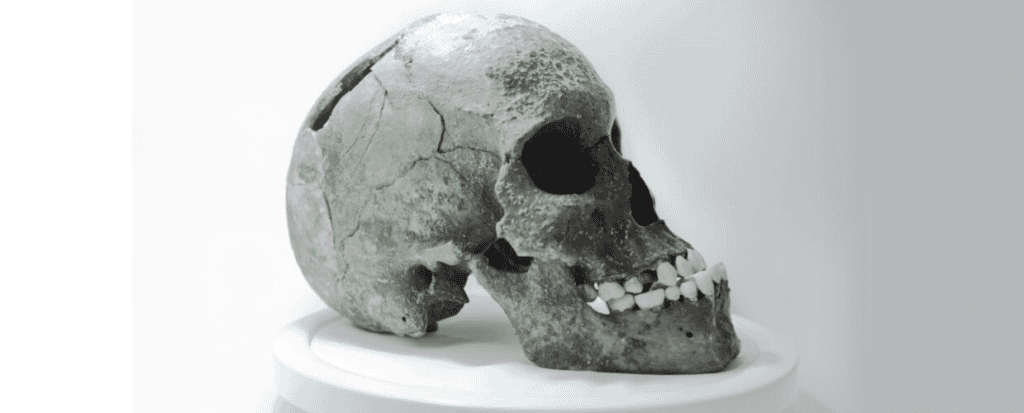In 1843, Danish naturalist Peter Wilhelm Lund made a significant discovery in the caves of Lagoa Santa, Minas Gerais, Brazil. He unearthed petrified human skeletons mixed with bones of extinct animals, such as saber-toothed tigers. This evidence pointed to a vastly ancient human presence in the Americas, challenging the then-accepted biblical chronology that dated the Earth to around 6,000 years.

Documentação da Missão Arqueológica Francesa de Lagoa Santa
Crânio do acervo do Museu de História Natural e Jardim Botânico da UFMG
Lund’s findings were revolutionary, but they were not widely recognized at the time.
His theories about the antiquity of humans in the Americas conflicted with prevailing scientific and religious views, influenced by the theories of the French naturalist Georges Cuvier.
Cuvier’s ideas attempted to align scientific understanding with a biblical timeline, while geological studies—like those of Charles Lyell in Principles of Geology (1830-33)—were beginning to expand the concept of geological time.
Lund’s discovery, suggesting that humans and extinct animals coexisted in prehistoric eras, required a “complete inversion” of the accepted chronology, an idea many were unprepared to accept.
Several factors contributed to the limited impact of Lund’s work. His remote position in Brazil kept him on the scientific periphery, and he faced financial struggles and declining health, which ended his explorations shortly after his breakthrough.
Additionally, his findings were at odds with the “regime of truth” in science, a concept referring to the ideological and political constraints shaping acceptable knowledge.
These constraints were particularly rigid, given the dominance of both biblical chronology and scientific racism, which sought to categorize human remains within rigid racial classifications, detracting from the potential implications of Lund’s discovery.
Lund’s report was eventually published in Danish scientific journals and later translated and summarized by American Navy captain Isaac G. Strain for a Philadelphia scientific journal.
The publication highlighted the age of the fossils, noting that the petrification of human and animal remains suggested they shared the same ancient timeframe, potentially spanning over 30 centuries.
While this was less radical than today’s estimates of human presence in the Americas dating back around 30,000 years, it still challenged dominant narratives of the time.
At a period when indigenous populations faced severe oppression, Lund’s findings, implying a prolonged human history in the Americas, were ideologically disruptive.
Ultimately, Lund’s contributions faded into obscurity within mainstream science, though he remains a celebrated figure in Minas Gerais.
His collection, known as “the People of Lagoa Santa,” was sent to Denmark and is preserved in the Royal collections, largely unseen and unexamined.
Lund’s story underscores the impact of scientific and cultural biases on accepting new ideas, highlighting how groundbreaking discoveries can be sidelined when they challenge prevailing ideologies.
More about the Caves of Lagoa Santa
Caves of Lagoa Santa, MG, Brasil
Lagoa Santa Cave was first excavated by vocational archaeologists in the early twentieth century and laterby a team of professional archaeologists in 1956 (Hurt and Blasi 1969).
Between 2001 and 2003, the team excavated a total of 21 m3. Excavations detected generally well-stratified human burials, abundant lithic and bone artifacts, and common faunal and plant remains.
The stratigraphy, chronology, and formation processes at the site are discussed at length elsewhere (Araujo et al. 2008).
The Paleoindian occupation was dated both by radiocarbon and OSL, with ages ranging between 10,150 ± 130 B.P. (Beta 168451; wood charcoal; 12,380 to 11,240 cal B.P.) and 7560 ± 110B.P.(Beta 159243;wood charcoal; 8560 to 8160 calB.P.)
